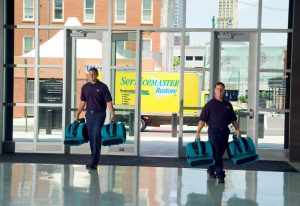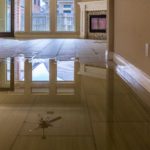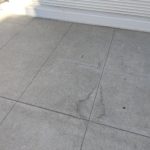
For those living in the northern states, warmer temperatures can never come soon enough. But while we may be prepared for the snow to melt, is your home or building ready too? While warm temperatures are just around the corner, weak building materials and lack of planning can result in significant damage to your home or building.
But just by taking a few steps now can prevent a major disaster in the spring. Check out these tips on how to prevent water damage from melting snow so you can focus more on going back outside instead of property damage.
How to Prevent Water Damage from Melting Snow
-
- Remove blockages from gutters, downspouts, and roof. While the whole point of a gutter system is to carry water away from the home and foundation, it won’t be able to do so with blockages. Follow these steps for safely removing snow, ice, and other debris:
- Use snow melt tabs to break up the ice lodged in the gutter
- Remove all debris, including ice, dirt, mud, sticks, and dead leaves from the gutters.

Clear away all ice and debris from the roof, gutter, and downspouts to prevent water and mold damage. - For extra peace of mind, attach a sloped leader to the downspouts to ensure large amounts of water don’t spill over and pool around the property.
- Seal all cracks in doors, windows, and foundation. When snow melts, it will run down the siding, finding any small holes and cracks along the way. Make sure that everything is sealed properly with weatherstripping or caulk, and replace old, worn-out window sealing with a new one. After doing this, you shouldn’t have to worry about water or mold damage.
- Test and Maintain the Sump Pump. With all of the snow melting into water and sinking below ground, the sump pump must be ready. Check the appliance itself to make sure it is working properly. Also make sure that there is no debris within the pit that prevents the machine from draining the water properly. Finally, don’t forget to run this maintenance test throughout the year, especially before rain and thunderstorms to prevent indoor flooding!
- Remove blockages from gutters, downspouts, and roof. While the whole point of a gutter system is to carry water away from the home and foundation, it won’t be able to do so with blockages. Follow these steps for safely removing snow, ice, and other debris:

- Secure personal belongings and chemicals. Just in case the unexpected does happen, make sure that there are no valuables or dangerous chemicals on the floor in your basement. This will prevent significant damage to precious belongings as well as protect everyone in the home from dangerous chemicals contaminating floodwaters.
- Inspect appliances. Again, if the unexpected does happen, you can minimize the damage by taking a few steps.
- Remove personal items, especially clothing, away from the water heater and furnace.
- If possible, try to raise the washer and dryer off the floor to prevent water damage during a flood.
- Inspect for current water damage. Any water damage added on to existing water damage can only result in a disaster. Be sure to inspect your home thoroughly for any leaking pipes or appliances. Common areas for these problems include:
- Basement
- Crawlspace
- Attic
- Bathroom
- Windows and exterior doors
Call a Water Mitigation Professional

There are indeed multiple steps that can be taken to prevent water damage from melting snow, but life throws unexpected surprises all the time. You may have covered every area that you may have thought was at risk but only to find the only area you least expected to be drenched.
Water damage restoration professionals like ServiceMaster knows that emergencies and accidents like this happen every day. That’s why they are available 24/7 to handle water-related
emergencies. From removing excess water and moisture to removing soiled building materials to rebuilding the affected area, you can count on these professionals to handle all aspects of the job. They will even work with your insurance provider with an open claim so you can focus more on outdoor spring activities instead of a flooded home.




